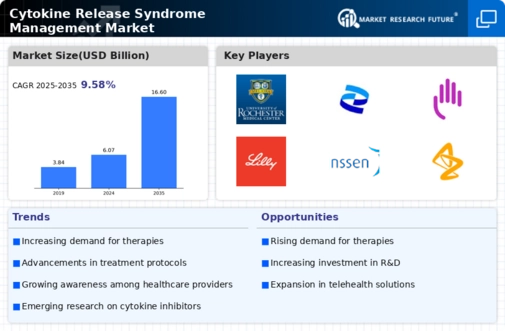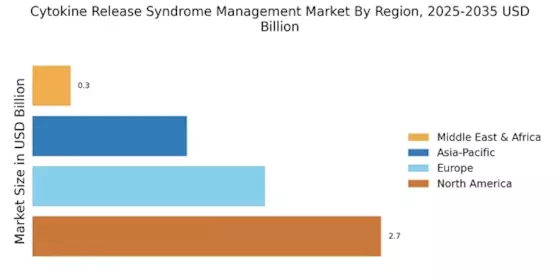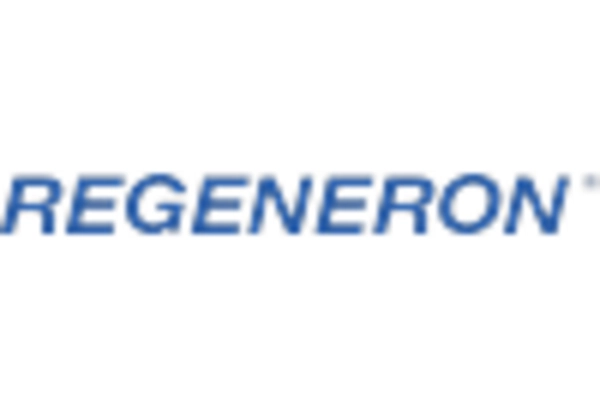Advancements in Treatment Modalities
Innovations in treatment modalities for managing cytokine release syndrome are likely to propel the Cytokine Release Syndrome Management Market forward. The development of monoclonal antibodies, such as tocilizumab and anakinra, has shown promise in mitigating CRS symptoms. These advancements not only enhance patient outcomes but also stimulate market growth as healthcare providers seek effective solutions. The market for CRS management is projected to reach USD 1.5 billion by 2026, driven by these novel therapies. Additionally, the integration of personalized medicine approaches may further refine treatment strategies, suggesting a dynamic evolution in the management of CRS that could reshape the industry landscape.
Regulatory Support for Innovative Therapies
Regulatory bodies are increasingly supporting the development of innovative therapies for cytokine release syndrome, which may significantly impact the Cytokine Release Syndrome Management Market. Fast-track designations and breakthrough therapy designations are being granted to promising treatments, expediting their approval processes. This regulatory support not only encourages pharmaceutical companies to invest in CRS management solutions but also enhances patient access to novel therapies. The potential for expedited market entry of new products could lead to a more competitive landscape, fostering innovation and improving treatment options for patients. As a result, the industry may experience accelerated growth driven by these favorable regulatory conditions.
Increased Investment in Research and Development
The surge in investment in research and development for cytokine release syndrome management is likely to be a significant driver for the Cytokine Release Syndrome Management Market. Pharmaceutical companies and research institutions are allocating substantial resources to explore new therapeutic targets and treatment strategies for CRS. This focus on R&D is expected to yield novel therapies and management protocols, enhancing the overall efficacy of CRS treatment. Market analysts project that R&D spending in this area could exceed USD 500 million by 2027, reflecting the industry's commitment to addressing the challenges posed by CRS. Such investments may not only lead to improved patient outcomes but also stimulate market growth, indicating a promising future for the industry.
Rising Incidence of Cancer and Autoimmune Diseases
The increasing prevalence of cancer and autoimmune diseases appears to be a primary driver for the Cytokine Release Syndrome Management Market. As more patients undergo immunotherapy, the incidence of cytokine release syndrome (CRS) is likely to rise. Reports indicate that CRS occurs in approximately 30-50% of patients receiving CAR T-cell therapy, which is becoming more common in oncology. This trend suggests a growing need for effective management strategies and therapies to address CRS, thereby expanding the market. Furthermore, the rising number of clinical trials focusing on immunotherapies may contribute to the increased awareness and demand for CRS management solutions, indicating a robust growth trajectory for the industry.
Growing Awareness and Education Among Healthcare Professionals
The increasing awareness and education regarding cytokine release syndrome among healthcare professionals is a crucial driver for the Cytokine Release Syndrome Management Market. As more clinicians recognize the signs and symptoms of CRS, timely diagnosis and intervention are likely to improve. Educational initiatives and training programs are being implemented to equip healthcare providers with the necessary knowledge to manage CRS effectively. This heightened awareness may lead to an increase in the adoption of management protocols and therapies, thereby expanding the market. Furthermore, as healthcare systems prioritize patient safety and quality of care, the demand for effective CRS management solutions is expected to rise, indicating a positive outlook for the industry.


















Leave a Comment